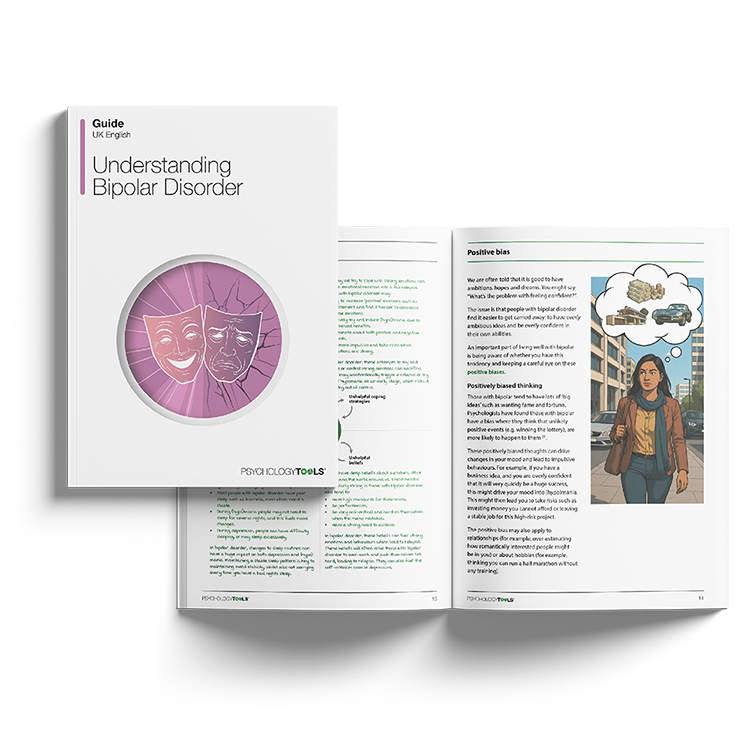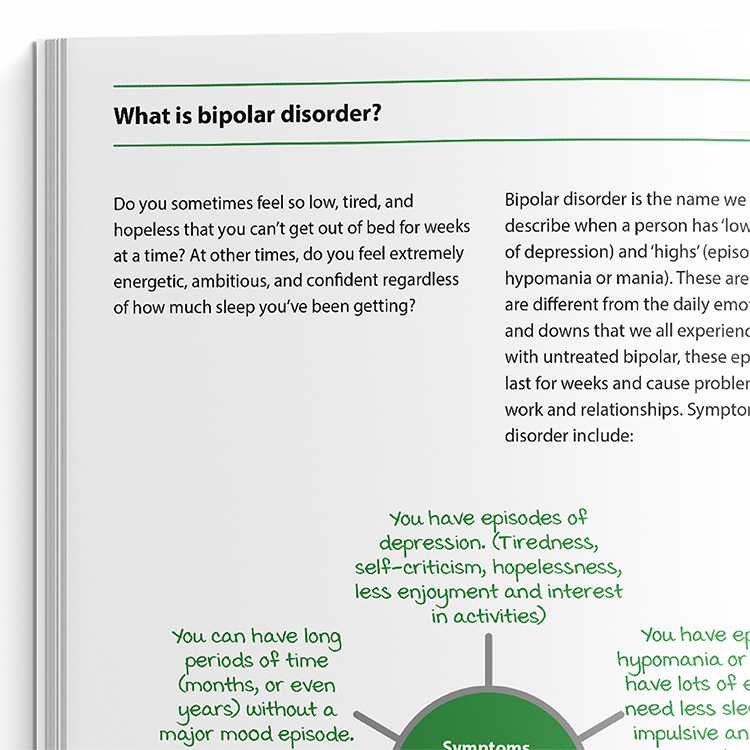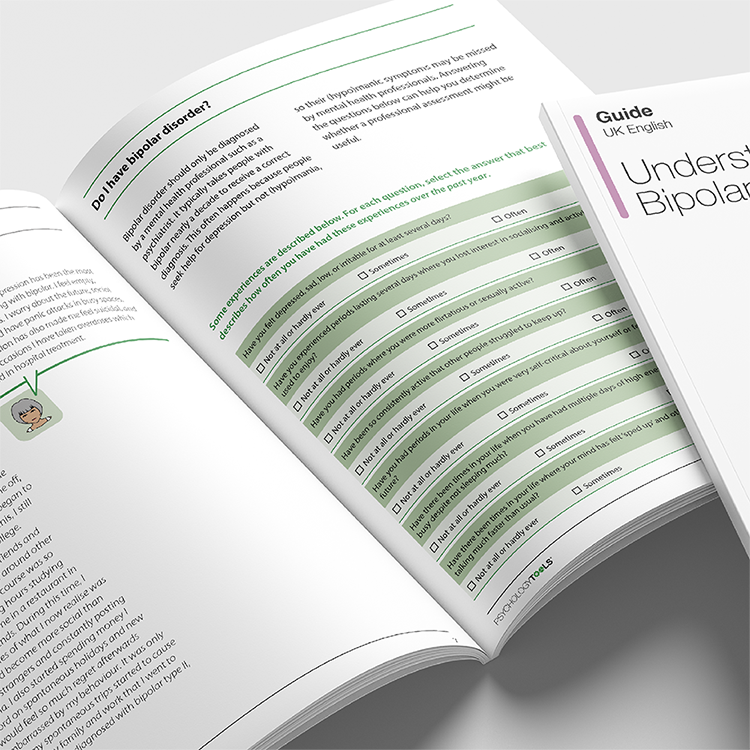Guide (PDF)
A psychoeducational guide. Typically containing elements of skills development.
An accessible and informative guide to understanding bipolar disorder, written specifically for clients.

A psychoeducational guide. Typically containing elements of skills development.
To use this feature you must be signed in to an active account on the Advanced or Complete plans.

Our ‘Understanding…’ series is a collection of psychoeducation guides for common mental health conditions. Friendly and explanatory, they are comprehensive sources of information for your clients. Concepts are explained in an easily digestible way, with plenty of case examples and accessible diagrams. Understanding Bipolar Disorder is designed to help clients with bipolar understand more about their condition.
This guide aims to help clients learn more about bipolar disorder. It explains what bipolar is, what the common symptoms are, and effective ways to address it, including medications and cognitive behavioral therapy (CBT).
In bipolar I, people have manic episodes and can be very unwell. Those with bipolar type I usually – but not always – experience episodes of depression as well.
In bipolar II, people have hypomanic episodes which can be like full mania but do not go on for as long. Those with bipolar type II tend to have more severe and longer episodes of depression than those with bipolar disorder type I.
Identify clients who may be experiencing bipolar disorder.
Provide the guide to clients who could benefit from it.
Use the content to inform clients about bipolar disorder and help normalize their experiences.
Discuss the client’s personal experience with bipolar disorder.
Plan treatment with the client or direct them to other sources of help and support.
This guide draws upon cognitive behavioral theory to explain and contextualize bipolar disorder. It focuses not only on defining symptoms, but also on identifying what can trigger and exacerbate mood episodes.
Key psychological mechanisms are outlined, including:

Just enter your name and email address, and we'll send you Understanding Bipolar Disorder (English US) straight to your inbox. You'll also receive occasional product update emails wth evidence-based tools, clinical resources, and the latest psychological research.
Working...
This site uses strictly necessary cookies to function. We do not use cookies for analytics, marketing, or tracking purposes. By clicking “OK”, you agree to the use of these essential cookies. Read our Cookie Policy